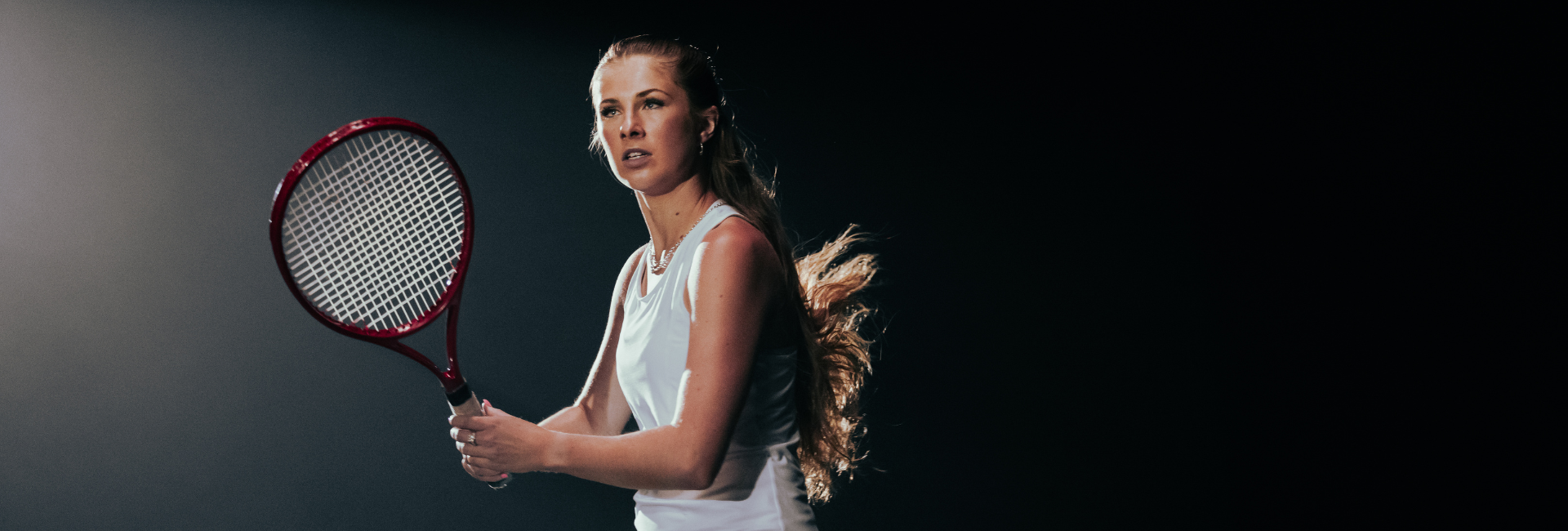Game, set, notch: Inclusive design makes all the difference for this low-vision tennis player
August 28, 2023 | By Alexandria Baiz and Samantha Mosconi
Courtney Webeck has a simple motto: “Chase your dreams and don’t stop.”
It’s the dreams that are complicated.
The 20-year-old from rural New South Wales, Australia, was diagnosed with low vision at birth and describes her vision as peering through a thick fog. That didn’t stop her from riding horses competitively or playing netball — a sport similar to basketball and one of the most popular women’s team sports in Australia — and track and field. But once she left school, she found that many athletic opportunities dried up.
Then, in 2021, she entered a Paralympic talent search, where athletes with disabilities can try a variety of sports — archery, alpine skiing, judo, rowing and wheelchair fencing, to name a few. She picked up a tennis racket for the first time and quickly caught the attention of the tennis coach.
Today Webeck is an Australian blind and low-vision tennis champion.
“I think I’m very driven — probably a bit pigheaded,” she laughs. “I don’t like to lose. Losing is a huge part of sport, though: When we lose we learn, then we can enjoy the victories even more.”
As with many sports for athletes who are blind or have low vision, Webeck plays a modified game, with a smaller court, a lower net and a ball that jingles so players can better track its location. Modified — but not easy by any stretch.
“The most challenging part for me was picking up the sound when the ball was in flight,” says former professional tennis player Alicia Molik, an Olympic bronze medalist and winner of two Grand Slam doubles tournaments who donned blackout glasses to play Webeck in an exhibition match earlier this year. “It made me feel that I was really incapable of a skill that ordinarily I’d be expert at.”
Mastercard worked with Tennis Australia to bring the match to the Australian Open to help raise awareness for blind and low-vision sports, and as part of the company’s commitment to fueling inclusion for those pursuing any passion and, of course, in the realm of payments.
Because everyday life is not always as accommodating for someone with visual impairments, Mastercard introduced the Touch Card, a design that features unique notches that allow cardholders to distinguish between a credit, debit or prepaid card and to orient it properly. Launched in September by Ajman Bank in the UAE, the Touch Card is now offered by dozens of banks on four continents, most recently by Citizens Bank in the U.S., and is available on cards issued in Australia by Westpac and, soon, by CommBank.
“The momentum is a testament to the power of inclusive design,” says Raja Rajamannar, Mastercard’s chief marketing and communications officer, who was inspired to develop the card in part because of his memories of helping his blind grandmother navigate. “This simple and small modification enables everyone to participate in the digital economy with confidence.”
Though Australia has made great strides in making its cash easier to handle for people who are blind or have low-vision — in 2016 the Reserve Bank of Australia started issuing banknotes with raised bumps to distinguished between denominations — the use of cash at physical checkouts dropped by half between 2019 and 2022.
Sally Karandrews is the CEO of Blind Citizens Australia and is blind. She recently found herself struggling more when handling coins: “I used to be able to do it just by touch. I had a muscle memory of exactly what coin that will be. But because I use them so infrequently now, I was getting them quite confused.”
The Touch Card helps connect people who are visually impaired —— with the digital world, but Karandrews and Webeck say the beauty of the design is an estimated 2.2 billion people worldwide that it’s really a benefit to anyone. That includes everyone from people who are aging to someone reaching for their card in low-light situations.
With the Touch Card, “it’s easy to grab and go and pay, and you know it’s the right one,” Webeck says. “You’re not staying there fumbling through your wallet looking for something and you can go easy.”
Webeck continues to pursue several sports, including cricket, another game she discovered at the Paralympic talent search two years ago. Already she’s helped her New South Wales team win the title at the National Cricket Inclusion Championships earlier this year. A typical week might include travel to sports camps, tennis practice, cricket training and some Pilates and weight work, with matches on the weekends.
The farm where she lives with her family is quite remote, so she’s had to make a few modifications to keep up with her regimen, including training her border collie Ted to fetch her cricket balls. “Small things like that,” she laughs, “so my parents don’t have to chase after them.”